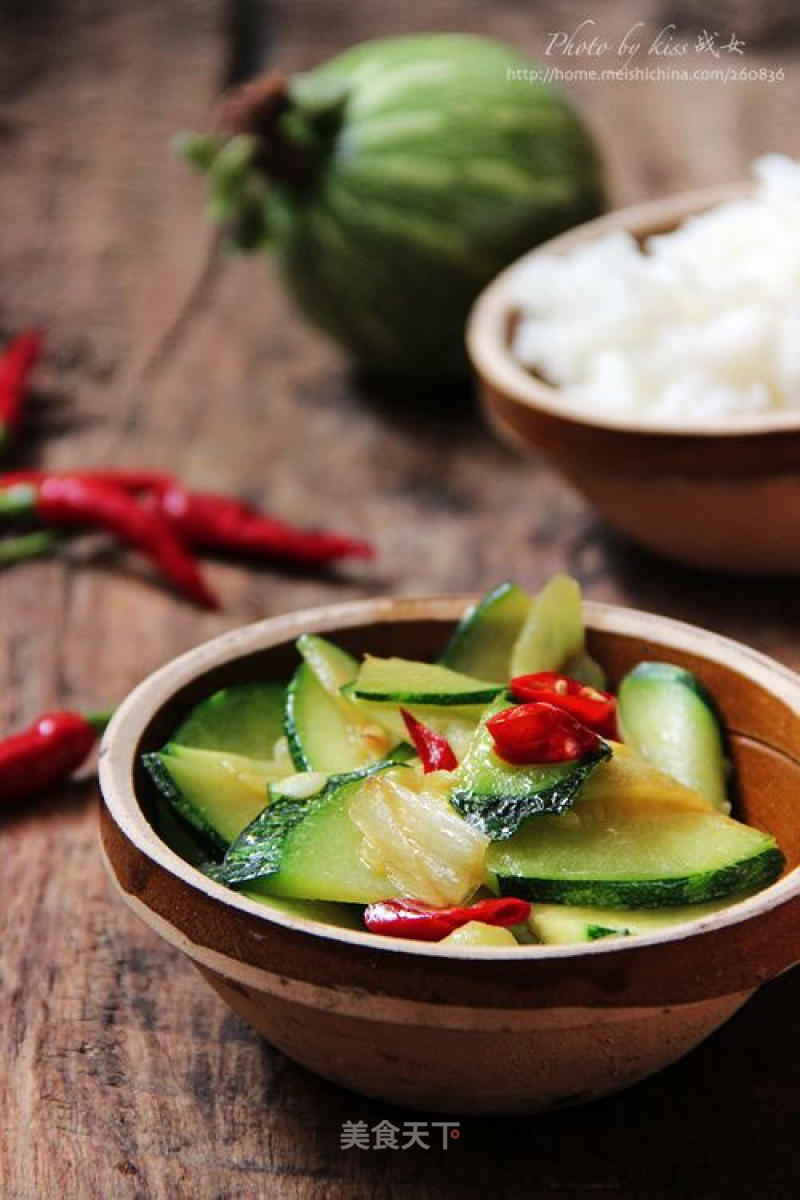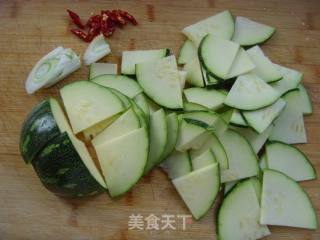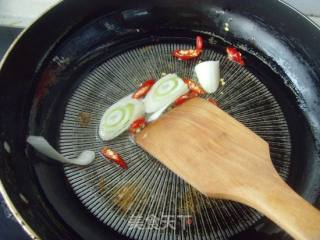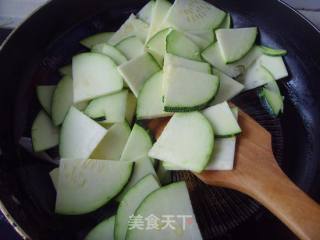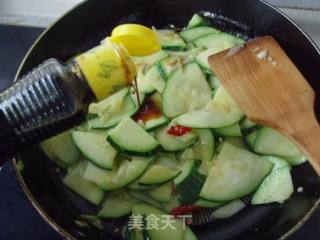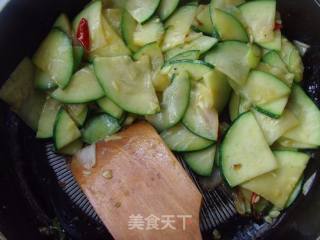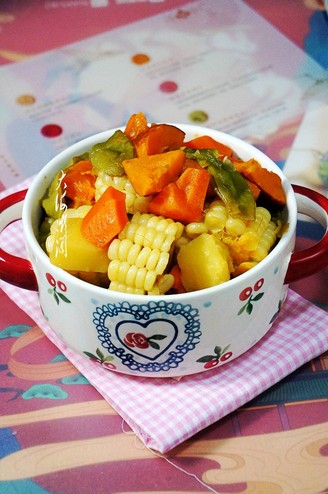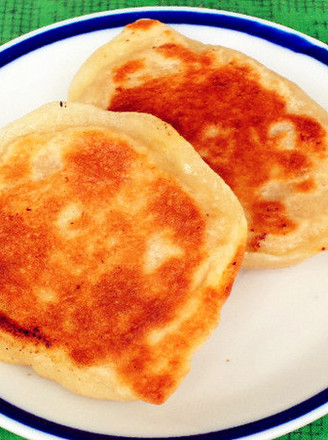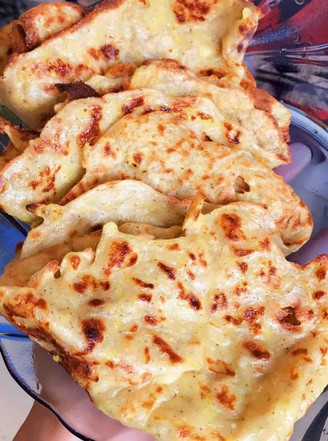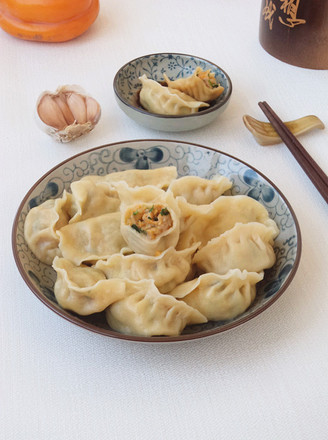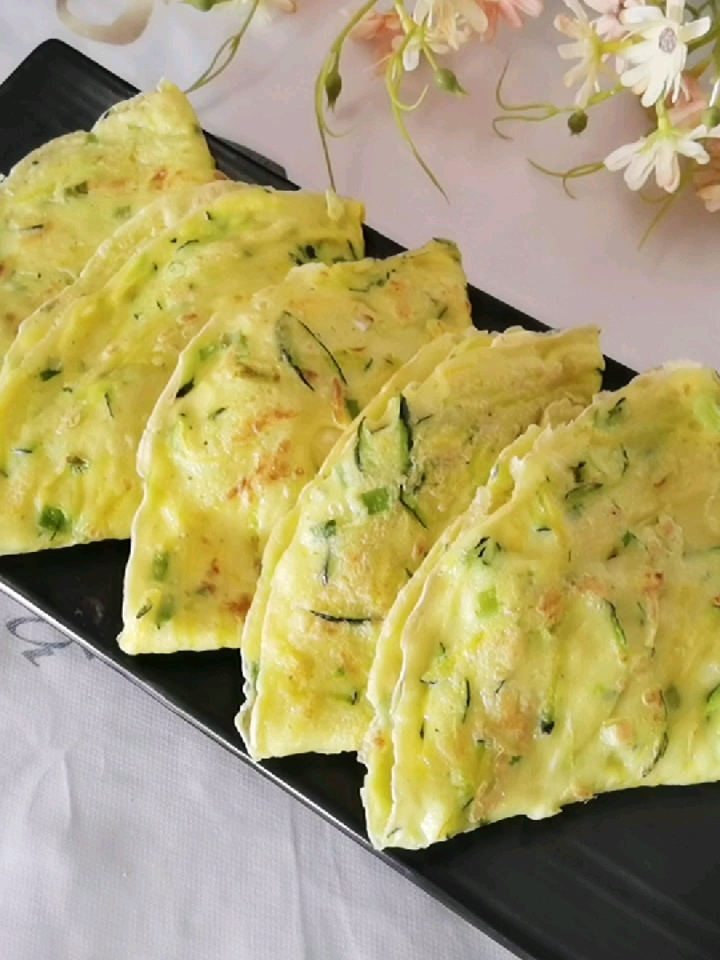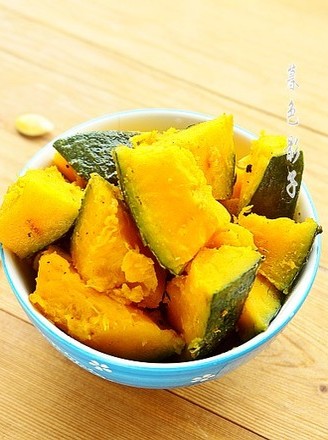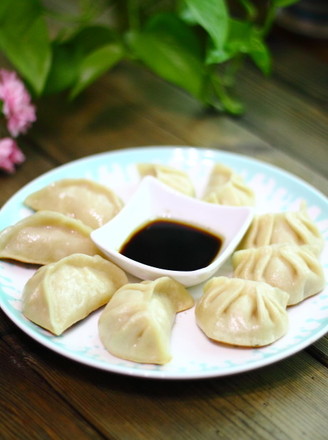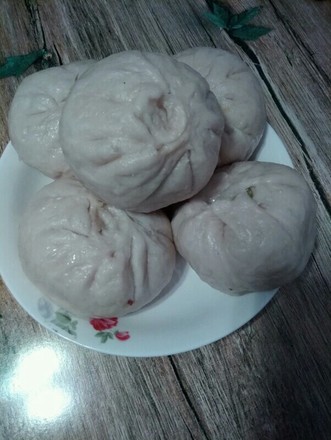Spicy Stir-fried Japanese Gua
by kiss war girl
Favorite
Difficulty
Easy
Time
10m
Serving
2
In my memory, whenever spring came, my mother planted a few seeds on the courtyard wall of her hometown. At the beginning of summer, the large green and green leaves of the Japanese quince seedlings, which are much like lotus leaves, will follow the sturdy stems and climb the courtyard walls, and the yellow quince flowers that resemble trumpets will bloom. Under the beautiful flowers, day by day, they grow into fat and lovely tender green Japanese gourds. When we are young, we are not allowed to pinch the flowers with small squashes. If they are pinched, they will be scolded when they are seen by the adults.
The Japanese melons can't finish eating when they are tender, or if they are busy with farming work, they will grow old slowly. Finally, they turn into golden yellow in autumn, squatting quietly on the wall, feeling a little bit The poetry of sad autumn.
When the Japanese squash is tender, you can not only stir fry, but also make stuffing and make dumplings...
But no matter how I do it, I still love spicy fried wok gua. "
The Japanese melons can't finish eating when they are tender, or if they are busy with farming work, they will grow old slowly. Finally, they turn into golden yellow in autumn, squatting quietly on the wall, feeling a little bit The poetry of sad autumn.
When the Japanese squash is tender, you can not only stir fry, but also make stuffing and make dumplings...
But no matter how I do it, I still love spicy fried wok gua. "

